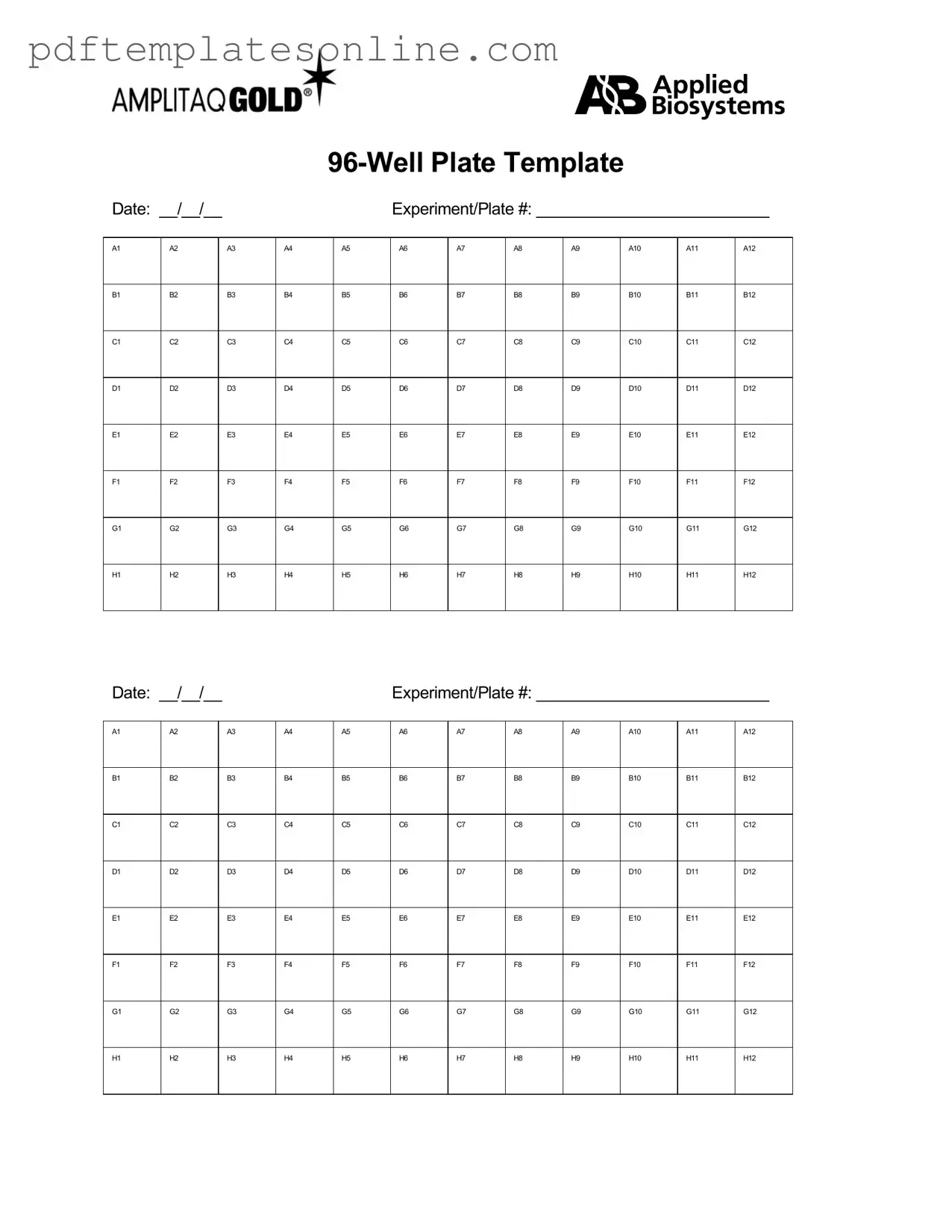Filling out the 96 Well form can be a straightforward process, but many individuals encounter common pitfalls that can lead to delays or complications. One frequent mistake is overlooking the importance of accurate personal information. It’s essential to ensure that names, addresses, and contact details are correct. A simple typo can result in significant issues, such as miscommunication or misplacement of documents.
Another common error is neglecting to follow the specific instructions provided with the form. Each section of the 96 Well form may have unique requirements. Failing to adhere to these guidelines can lead to incomplete submissions. Always read the instructions carefully to avoid this mistake.
People often underestimate the significance of signatures and dates. In many cases, a form can be deemed invalid if it lacks a signature or is not dated properly. This oversight can lead to unnecessary back-and-forth communication, causing delays in processing. It is crucial to double-check that all necessary signatures are present and that the dates are filled in correctly.
Inconsistent formatting is another issue that arises frequently. Whether it’s using different font sizes or styles, maintaining a uniform appearance throughout the form is important. Inconsistencies can confuse reviewers and may result in misunderstandings about the information provided. Always use the same format for similar types of information.
Additionally, individuals sometimes fail to provide supporting documentation when required. The 96 Well form may ask for additional documents to verify the information provided. Omitting these can lead to a rejection of the form or a request for resubmission. It is wise to gather all necessary documentation before starting the form.
Lastly, procrastination can lead to rushed submissions. Filling out the form with haste often results in careless mistakes. Taking the time to complete the form thoughtfully and reviewing it thoroughly before submission can prevent many of these common errors. A careful approach will ensure that the form is filled out accurately and completely.
